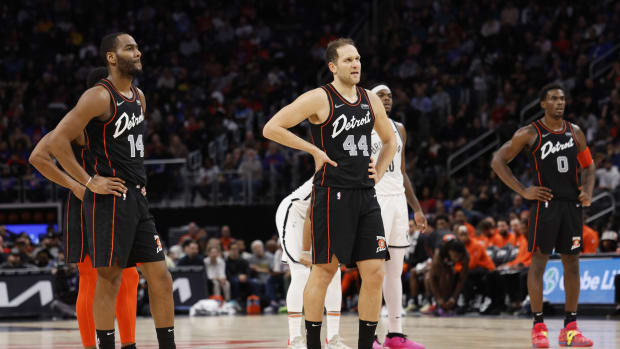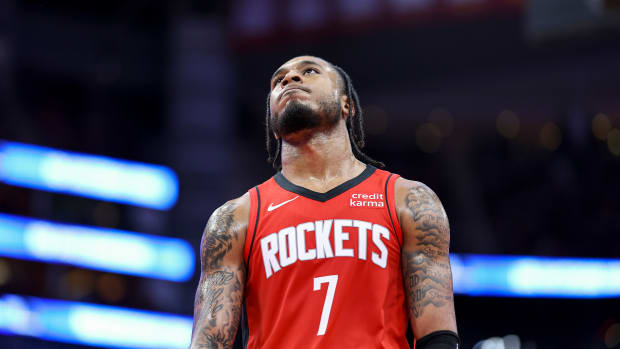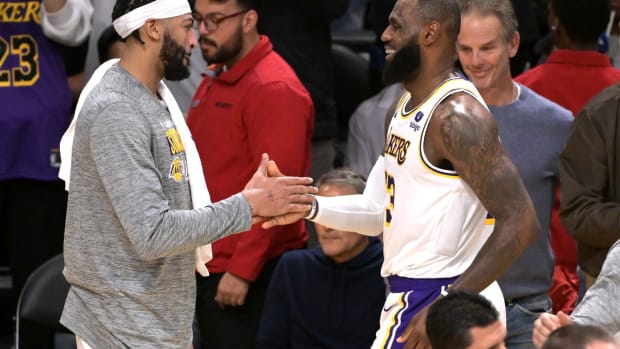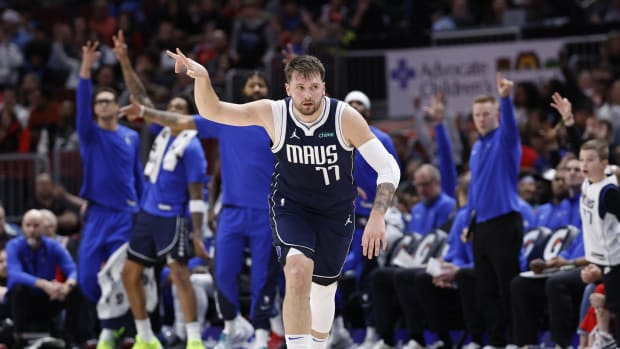2019 NBA Draft: Ranking Best Bigs Available
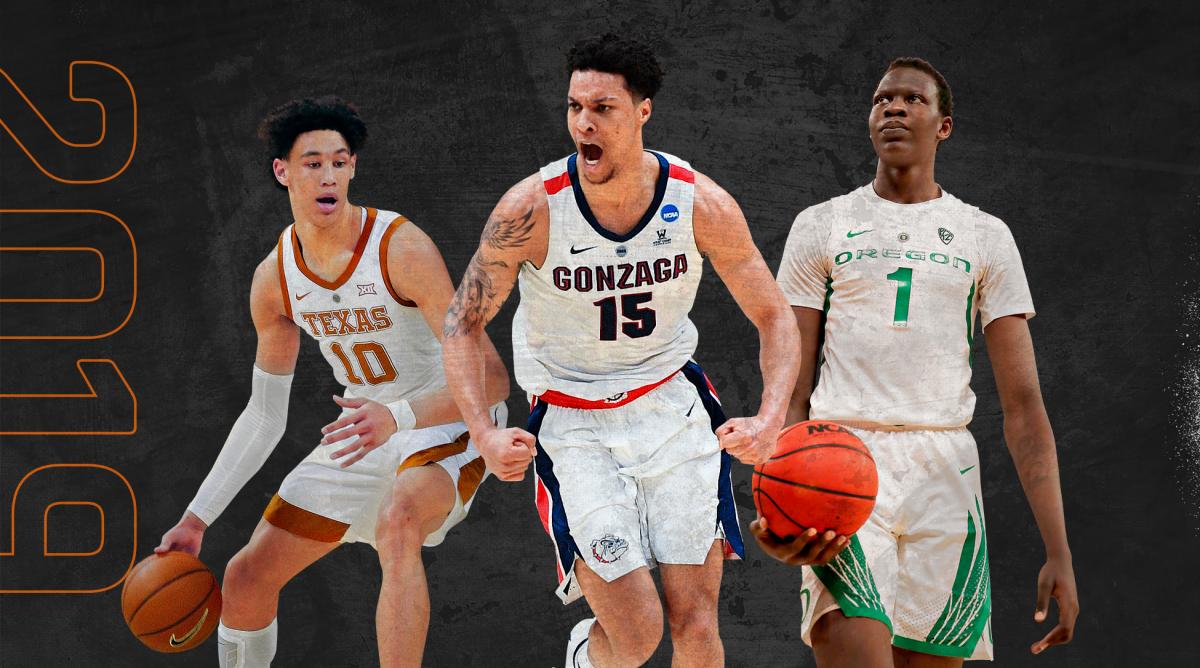
With the NBA draft fast approaching, The Front Office decided to take a look at every position in the draft. Zion Williamson is obviously the name that jumps out from this group. The consensus No. 1 pick in this year's NBA draft, he headlines a deep staple of big men. Our complete list of the top 100 prospects in the draft can be found here, and our latest mock draft projections here.
1. Zion Williamson, Duke | Freshman
Arguably the most dominant college freshman ever, it took Williamson little time to separate himself as the top prospect in this class. His immense athletic ability and basketball instincts are conducive to easy baskets, transition offense and momentum-swinging plays on both ends. Playing downhill with his strength, deft touch and passing ability, he was almost impossible to defend at Duke. While he is not an outstanding jump shooter, Williamson can simply barrel into the paint when defenses sag, and will draw gobs of fouls. His unusually pronounced strengths have covered for his flaws in prolific fashion. To maximize his ability long-term, Williamson will gradually need to expand his skill set in a way that relies less on his explosiveness and more on craft. His athletic gifts and the fact he plays so hard and cares so much should ensure he remains productive until he gets to that point. Few college players were ever so dominant, and fewer appeared to have as much fun doing it.
2. Goga Bitadze, Buducnost | International
Bitadze is pretty clearly the most polished big man in the draft, and comes off a breakout year overseas at the ripe age of 19. Noting his statistical productivity at a high level already, it’s easy to project him evolving into a useful player, although there will be hurdles for him to clear against more athletic competition. Bitadze is more of a traditional five, with natural scoring ability around the basket, good feel and surprising mobility and shot-blocking skills for his size. Defensively, he won’t be a plus operating in space, but he’s estimably closer to NBA-ready than most right now. If his jump shot stretches to three-point range consistently, it should go a long way toward helping him stay on the floor.
3. Jaxson Hayes, Texas | Freshman
Hayes’s projectable physical profile, advanced defensive instincts and his associated long-term upside gives him a chance to be the first center selected in June. He has a lot of maturing to do, but he’s an extremely attractive blank slate from a development standpoint and has a body type that should be able to pack on muscle while he retains his mobility. As a late-bloomer with high-caliber tools, natural ability defending the basket and some touch around the rim, Hayes has the potential to check every box for a five-man who doesn’t shoot jumpers. His offensive contributions are functionally limited—he’s purely a finisher right now—and his rebounding can be a bit inconsistent. He’ll need shots created for him. But Hayes has a reasonable chance of becoming a starting-caliber big and plus rim protector down the line.
4. PJ Washington, Kentucky | Freshman
Washington successfully boosted his stock by returning to school and turning in a consistent season, solidifying himself as an appealing potential role player. As a mobile, athletic rebounder with finishing touch and a solid feel for the game, Washington is an ideal small-ball big. He continues to become a better jump shooter, and he finds ways to impact games without scoring. The easy baskets will be harder for him to come by at a higher level, and he’ll have to overcome the height factor, but he’s extremely long and bouncy, which should go a long way. Where Washington once might have been a tweener, he now may fit neatly into the modern NBA.
5. Bol Bol, Oregon | Freshman
Bol’s season-ending foot injury made him even more of a wild card in this draft, but his shooting ability and off-the-charts measurements are certainly intriguing. While in terms of sheer ability he can justify a lottery selection, the implications of his foot issues and his extremely slender body type causes concern. Teams have long held concerns about his work ethic and whether he can physically handle (or even warrant) a heavy minutes load. He will get pushed around. But if everything were to pan out correctly for Bol, who has natural touch and help-side shot-blocking chops, he could deliver on his tremendous upside.
6. Nic Claxton, Georgia | Sophomore
One of the more appealing long-term projects in this draft class, Claxton’s primary selling point is his defensive versatility, and a high perimeter skill level for his size. He’s quick enough to switch onto bigger wings, has the length and instincts to alter shots, and rebounds with intent. With his mobility and ability to cover ground, Claxton could be a high-level ball-screen defender. He’s also shown some limited capacity to shoot from outside, adding a layer of offensive upside. His functional offensive game is unrefined, and he has a ways to go before consistently being able to impact games as a scorer, but he has the makings of a multidimensional contributor.
7. Bruno Fernando, Maryland | Sophomore
After a much-improved sophomore season, it’s even more apparent that Fernando’s NBA body, physicality and motor create a degree of long-term floor. He might be ready to log some minutes right away, and fit into a less-demanding offensive role that better suits him. Many of the immediate concerns with Fernando’s game stems from occasionally stiff post-up play and turnover issues, but realistically, he’s not a guy you’ll want to run things through at the next level anyway. Fernando is actually a better passer than he gets credit for, and shoots with touch. He’ll run the floor and finish, won’t command extra touches, and should be able to turn himself into a useful rotation player if he remains willing to do the dirty work.
8. Brandon Clarke, Gonzaga | Junior
Clarke was perhaps the premier energy big in college basketball this season, combining efficient, low-maintenance offense with prolific shot-blocking skills and giving Gonzaga an interior backbone. Because he lacks prototypical size, length and body type, and because he’s nearly 23 years old, many NBA teams have questions as far as what parts of his game will translate, and in what fashion. He may find it much harder to scavenge for tip-ins and offensive rebounds against frontcourts that can match him athletically. There are concerns about his shooting, given his iffy mechanics, low volume of three-point attempts and average free-throw clip. Clarke knows who he is as a player and should offer some degree of floor with his motor and willingness to do the dirty work, but it’s hard to see him being very dynamic offensively at the next level, which caps some of the ceiling here.
9. Luka Samanic, Ljubljana | International
Samanic is a skilled big with legitimate versatility on the perimeter, and an above-average ball-handler, passer and shooter for his size. He’s added some strength over the past year, and looks like he’ll be able to hold his own in due time. His feel for the game is strong, and his ability to play as a screener or on the perimeter fits nicely with positionless concepts. The fact that he’s still just 19 helps his case, and a strong performance at the draft combine helped solidify his stock. Given time to develop, Samanic can be an impactful, multi-skilled NBA player.
10. Mfiondu Kabengele, Florida State | Sophomore
Kabengele emerged over the course of the season as Florida State’s sixth man, showcasing a surprising level of defensive mobility for a big-bodied player and proving he can block shots (he is Dikembe Mutombo's nephew, after all), rebound with consistency and knock down spot-up threes. His productivity and willingness to play a role off the bench help his case, and he checks the right boxes for an energy big. If his three-point shooting translates and he can improve his athleticism a bit, there’s an interesting player here.
11. Jontay Porter, Missouri | Sophomore
Porter re-tore his right ACL in March and seems poised to hit significant medical snags. He originally tore that ACL, along with his MCL, in October 2018. The why of the re-injury situation raises some questions. Porter does have a terrific feel for the game and an attractive pass-dribble-shoot skill set for a big, but his conditioning and body type have always been points of emphasis, and he can no longer answer those questions adequately in the short-term. His freshman productivity remains a strong résumé point, and he warrants a selection at whichever point a team deems the risk to be mitigated. If he can return to full health and stay there, he has a chance to eventually help someone in a real way.
12. Daniel Gafford, Arkansas | Sophomore
Gafford is a long, fluid rim-running big who was productive across two college seasons and will get a chance to contribute at the next level. He won’t need heavy post-up touches to be effective, rebounds the ball well, and will have a chance to add value through those strengths. However, he has an increasingly replaceable NBA role, and may not be quite skilled or athletic enough to truly set himself apart. His length, fluidity and finishing will make him of interest to teams that like to spread the floor around their five-men. But his upside may be capped by his lack of a jump shot and rudimentary offensive skills.
13. Naz Reid, LSU | Freshman
After a lackluster start, Reid ultimately proved this season that when he’s fully engaged, he can be an impactful frontcourt option. That said, his athletic limitations and defensive struggles at center are not ideal for where the NBA is headed. He’s skilled, can rebound and has a diverse offensive skill set, but Reid has never quite delivered the sort of consistent results you’d hope for. Reid is not the most efficient scorer, and though he can hit open threes, his shot selection has been an issue at times. Reid’s game is more cosmetically intriguing than it is role-applicable at this stage, but if he can work into peak shape and buys in completely, he has the ability to deliver some value.
14. Isaiah Roby, Nebraska | Junior
Roby is a plus athlete and potentially versatile four-man who will need to take a leap forward in consistency before carving out real NBA minutes. Talent isn’t the issue: he’s big and agile, can handle the ball and score inside, and has also made improvements as a perimeter shooter. He’s a solid shot-blocker and rebounder with the tools to be a versatile, switch-friendly defender, fitting conceptually into modern NBA frontcourts. Roby will likely need G League time to ensure he gets enough minutes next season, where he can build confidence and work out exactly what his role will be going forward. His potential is easy enough to see.
15. Eric Paschall, Villanova | Senior
Paschall was a good role player on Villanova’s 2018 title team, then had to adjust to a heavier scoring load as a senior. He’s a good athlete, plays hard and comes from a program that has produced NBA talent, but the upside here is somewhat limited. He’s a guy you draft to try and plug a hole immediately. He shoots well enough to be a stretch-four who rebounds and does the dirty work. Still, Paschall is not a terrific interior defender and has a heavy body type that may preclude him from matching up with bigger wings, adding up to potentially limited versatility on that end. Mechanically, it’s hard to fully trust him to be more than an average three-point shooter, and he will need to have shots created for him. Team fit will be particularly key given his specific skill set.
16. Jalen McDaniels, Sa Diego State | Sophomore
McDaniels enjoyed a productive season, but given his inconsistencies he remains more of an idea than someone you can throw into an NBA game with any confidence at this point. It’s difficult to get over his extremely thin build, and his transition into a stretch-four is ongoing—developing into a legitimate three-point threat is essential for a forward who won’t be able to do much banging on the inside. There’s some concern about him finding ways to score in the paint, his overall efficiency, and the lack of a consistent shot-blocking element to his game. The league-wide need for floor-spacing bigs makes him draftable, but McDaniels has a ways to go before contributing to a rotation.
17. Zylan Cheatham, Arizona State | Junior
Cheatham is an older prospect, but he’s a plus athlete and explosive leaper with the length to defend inside and on the perimeter. He can handle and pass well for his size, rebounds well, and will need to continue impacting games without scoring to find a niche. Cheatham’s biggest weakness is a questionable jump shot that limits some of his offensive role functionality—he’s built like a wing, but will probably have to play primarily along the baseline as an undersized face-up forward. He’s athletic and unselfish enough to make it work in the right situation.
18. Ethan Happ, Wisconsin | Senior
After a wildly productive college career, Happ—despite his glaring lack of a jump shot—has to be taken seriously as a prospect. From the standpoint of scoring feel, passing ability and all-around game, he does almost everything else well. But in a league that increasingly demands bigs be able to space the floor, his utter lack of an outside shot (and a career 54.5% free throw clip) bode poorly. He has natural skill on the interior, rebounds and handles it well, isn’t an bad athlete and makes plays defensively. You can argue that Happ has been too productive to fail, and even if he goes undrafted, there should be plenty of interest from teams who like to play two bigs and can utilize his skill package.
19. Dedric Lawson, Kansas | Junior
Lawson put together a productive college career, but there are fair questions about what parts of his game translate to the NBA that mostly stem from his below-average athleticism. He was dominant at times for Kansas, and is a solid rebounder and passer who showed improvement finishing inside and as a jump shooter. Lawson knows how to play with others and was surprisingly versatile. The issue is that he’s a bit slow-footed defensively, and that he might have issues impacting games when you aren’t running offense through him. He will need a particularly strong team fit to succeed.
20. Tacko Fall, UCF | Senior
Over the course of the past few months, Fall has proven he’s more than just a curiosity—he’s enormous, and his primary value as a vertical rim protector is immediately evident. He dwarfs most everyone on the floor, has gotten into pretty good shape and moves well for his size, and might have a chance at carving out a role as someone’s third center. He can’t shoot jumpers and will be limited offensively, but it’s hard to deny the way his length warps the dimensions of the floor. Given Fall’s unique physical advantages, a creative team should give him an opportunity to develop into an situational, 10-15 minute per game player who can wall off the rim.































